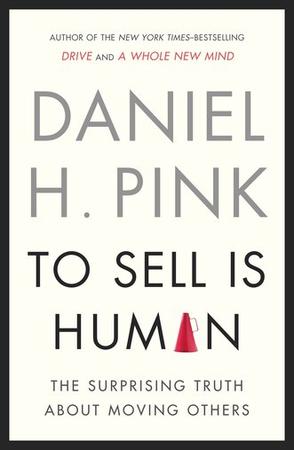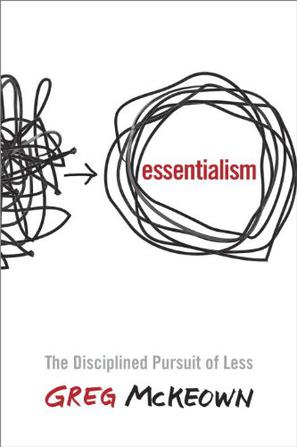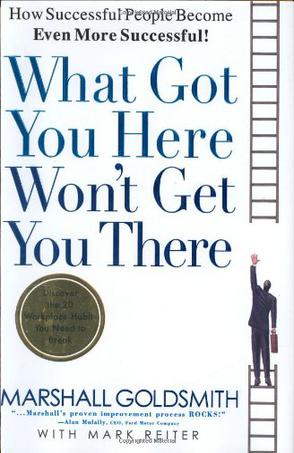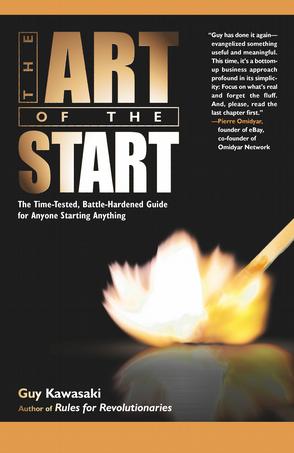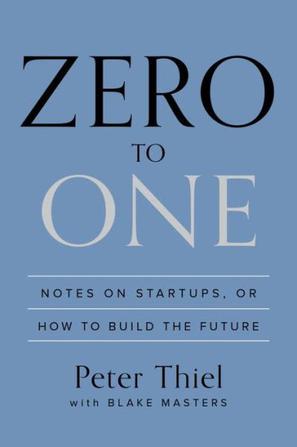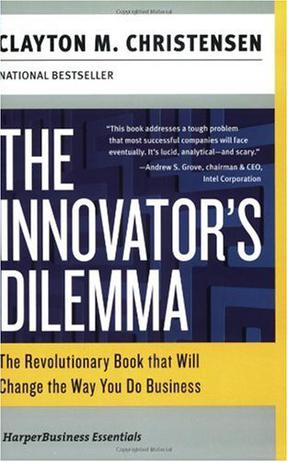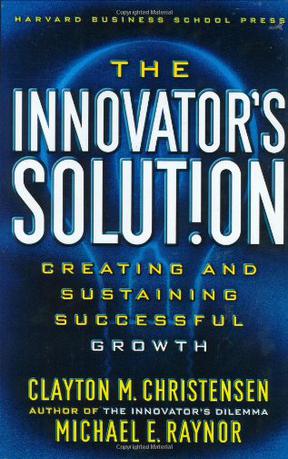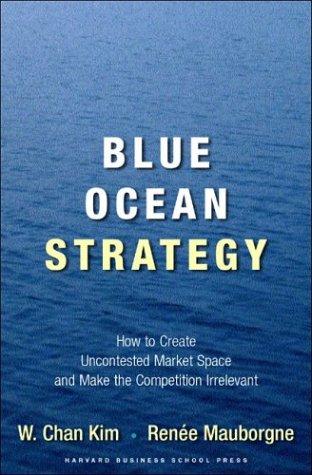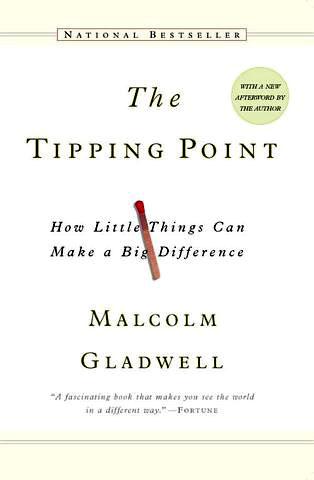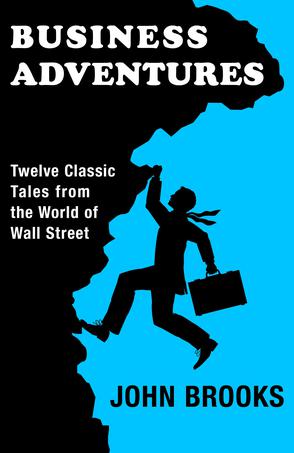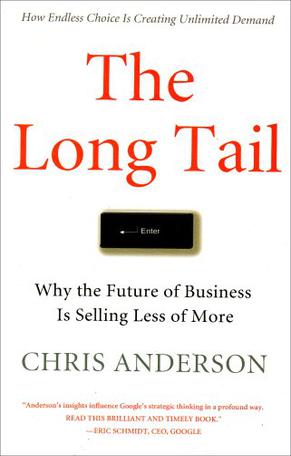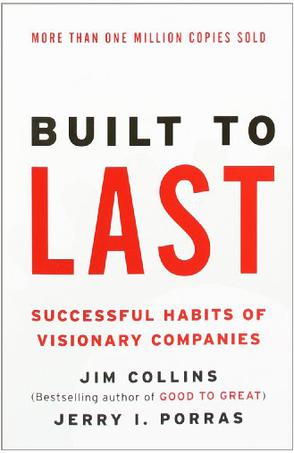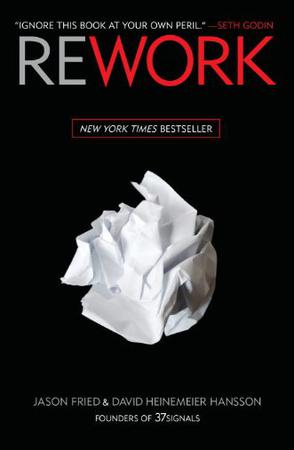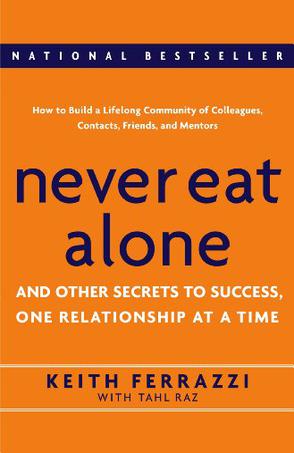欢迎来到相识电子书!
标签:business
-
工作中的博弈论GAME THEORY AT WORK
Easy-to-follow strategies for using game theory to grab the upper hand in every business battle game theory - the study of how competitors act, react, and interact in the strategic pursuit of their own self-interest - has become an essential competitive tool in today's business arena. "Game Theory at Work" provides examples of how businesspeople can use this time-proven approach to successfully meet competitive challenges and, more often than not, claim the upper ground in each battle before it begins. "Game Theory at Work" steers clear of the opaque mathematics and pedagogy that so often hamper practitioners of game theory, relying instead on lively case studies and examples to illustrate its remarkable methods in action.Complex yet comprehensible, it provides you with: methods for applying game theory to every facet of business; strategies for instantly improving your position in virtually any negotiation. Game theory techniques to increase the output and value of each employee. At its essence, business is a game, albeit a profoundly serious game that must always be played to win. "Game Theory at Work" is the first plain-English examination of the use of game theory in business. Let it provide you with the intellectual tools you need to instantly understand every game you're playing, use that knowledge to your advantage, and consistently maximize your finish-line payoff. '"Game Theory at Work" won't teach you about power-chants, discuss the importance of balancing work and family, or inspire you to become a more caring leader. This book will instead help you out - strategize, or at least keep up with, competitors inside and outside your company' - From the Introduction.Like Sun Tzu's timeless "The Art of War", "Game Theory at Work" is about knowing your adversary as well as yourself. It is also about using that knowledge to prepare yourself for victory. But above all, this one-of-a-kind book is about dramatically improving your strategic instincts and decision-making skills - and emerging victorious - in virtually any business encounter. Introduced by John von Neumann and Oskar Morgenstern in their 1944 book "Theory of Games and Economic Behavior", and further honed through the decades by thought leaders including Nobel Prize winner John Nash, game theory analyzes strategic interactions in which the outcomes of various choices depend on the choices of others."Game Theory at Work" applies this innovative tool to the world of business, and provides a step-by-step framework for using game theory to improve your on-the-job success in areas including: negotiating; managing; pricing; positioning; establishing; and strategic alliances. More than that, however, "Game Theory at Work" is a one-of-a-kind tool to battle the high costs of indecision. It shows you how to enter any encounter confident in how others will act, and then use game theory to base your strategies and actions on this knowledge. Case studies, puzzles, and, yes, games demonstrate why unexpected and often paradoxical results are the norm when humans compete, and help you use this fact to your advantage. And, chapter-ending lessons highlight essential rules learned...All in a book that is both absorbing and entertaining, designed to improve your business instincts without requiring the use of needless mathematics or theoretical mumbo-jumbo. Everything in life is competitive in one way or another, and game theory has revolutionized the art and science of what to look for-and how to act-when engaged in competition. "Game Theory at Work" studies the use of game theory in today's hard-fought business arena, and shows you how to use it to gain maximum advantage in every professional encounter, whatever your role in that encounter. -
What Got You Here Won't Get You There
America’s most sought-after executive coach shows how to climb the last few rungs of the ladder The corporate world is filled with executives, men and women who have worked hard for years to reach the upper levels of management. They’re intelligent, skilled, and even charismatic. But only a handful of them will ever reach the pinnacle -- and as executive coach Marshall Goldsmith shows in this book, subtle nuances make all the difference. These are small "transactional flaws" performed by one person against another (as simple as not saying thank you enough), which lead to negative perceptions that can hold any executive back. Using Goldsmith’s straightforward, jargonfree advice, it’s amazingly easy behavior to change. Executives who hire Goldsmith for one-on-one coaching pay $250,000 for the privilege. With this book, his help is available for 1/10,000th of the price. -
The World Is Flat
这是一本: 对世界经济及商业最富洞察力和预见性的巨作! 被比尔·盖茨、等全球商业领袖顶礼膜拜的里程碑作品 唯一一位3次获得普利策奖的财经作家 连续64周销量位居亚马逊书店十大畅销书之列 全球销售近1000万册 诺贝尔经济学奖得主斯蒂格利茨推荐 IBM大中华区总裁兼首席执行官周伟焜强烈推荐 IBM全体员工人手一册 《金融时报》与高盛2005年度最佳商业图书 When scholars write the history of the world twenty years from now, and they come to the chapter Y2K to March 2004, what will they say was the most crucial development? The attacks on the World Trade Center on 9/11 and the Iraq war? Or the convergence of technology and events that allowed India, China, and so many other countries to become part of the global supply chain for services and manufacturing, creating an explosion of wealth in the middle classes of the world's two biggest nations, giving them a huge new stake in the success of globalization? And with this flattening of the globe, which requires us to run faster in order to stay in place, has the world gotten too small and too fast for human beings and their political systems to adjust in a stable manner? In this brilliant new book, the award-winning New York Times columnist Thomas Friedman demystifies the brave new world for readers, allowing them to make sense of the often bewildering global scene unfolding before their eyes. With his inimitable ability to translate complex foreign policy and economic issues, Friedman explains how the flattening of the world happened at the dawn of the twenty-first century; what it means to countries, companies, communities, and individuals; and how governments and societies can, and must, adapt. The World Is Flat is the timely and essential update on globalization, its successes and discontents, powerfully illuminated by one of our most respected journalists. : Thomas L. Friedman is not so much a futurist, which he is sometimes called, as a presentist. His aim in The World Is Flat, as in his earlier, influential Lexus and the Olive Tree, is not to give you a speculative preview of the wonders that are sure to come in your lifetime, but rather to get you caught up on the wonders that are already here. The world isn't going to be flat, it is flat, which gives Friedman's breathless narrative much of its urgency, and which also saves it from the Epcot-style polyester sheen that futurists--the optimistic ones at least--are inevitably prey to. What Friedman means by "flat" is "connected": the lowering of trade and political barriers and the exponential technical advances of the digital revolution that have made it possible to do business, or almost anything else, instantaneously with billions of other people across the planet. This in itself should not be news to anyone. But the news that Friedman has to deliver is that just when we stopped paying attention to these developments--when the dot-com bust turned interest away from the business and technology pages and when 9/11 and the Iraq War turned all eyes toward the Middle East--is when they actually began to accelerate. Globalization 3.0, as he calls it, is driven not by major corporations or giant trade organizations like the World Bank, but by individuals: desktop freelancers and innovative startups all over the world (but especially in India and China) who can compete--and win--not just for low-wage manufacturing and information labor but, increasingly, for the highest-end research and design work as well. (He doesn't forget the "mutant supply chains" like Al-Qaeda that let the small act big in more destructive ways.) Friedman has embraced this flat world in his own work, continuing to report on his story after his book's release and releasing an unprecedented hardcover update of the book a year later with 100 pages of revised and expanded material. What's changed in a year? Some of the sections that opened eyes in the first edition--on China and India, for example, and the global supply chain--are largely unaltered. Instead, Friedman has more to say about what he now calls "uploading," the direct-from-the-bottom creation of culture, knowledge, and innovation through blogging, podcasts, and open-source software. And in response to the pleas of many of his readers about how to survive the new flat world, he makes specific recommendations about the technical and creative training he thinks will be required to compete in the "New Middle" class. As before, Friedman tells his story with the catchy slogans and globe-hopping anecdotes that readers of his earlier books and his New York Times columns know well, and he holds to a stern sort of optimism. He wants to tell you how exciting this new world is, but he also wants you to know you're going to be trampled if you don't keep up with it. A year later, one can sense his rising impatience that our popular culture, and our political leaders, are not helping us keep pace. --Tom Nissley Before 9/11, New York Times columnist Friedman was best known as the author of The Lexus and the Olive Tree, one of the major popular accounts of globalization and its discontents. Having devoted most of the last four years of his column to the latter as embodied by the Middle East, Friedman picks up where he left off, saving al-Qaeda et al. for the close. For Friedman, cheap, ubiquitous telecommunications have finally obliterated all impediments to international competition, and the dawning "flat world" is a jungle pitting "lions" and "gazelles," where "economic stability is not going to be a feature" and "the weak will fall farther behind." Rugged, adaptable entrepreneurs, by contrast, will be empowered. The service sector (telemarketing, accounting, computer programming, engineering and scientific research, etc.), will be further outsourced to the English-spoken abroad; manufacturing, meanwhile, will continue to be off-shored to China. As anyone who reads his column knows, Friedman agrees with the transnational business executives who are his main sources that these developments are desirable and unstoppable, and that American workers should be preparing to "create value through leadership" and "sell personality." This is all familiar stuff by now, but the last 100 pages on the economic and political roots of global Islamism are filled with the kind of close reporting and intimate yet accessible analysis that have been hard to come by. Add in Friedman's winning first-person interjections and masterful use of strategic wonksterisms, and this book should end up on the front seats of quite a few Lexuses and SUVs of all stripes. Although it may be catchy, the title of New York Times columnist Friedman's latest book needs explaining. "Flat" here means "level," as in the level playing field on which virtually any nation can now compete, thanks to the explosion of global telecommunications, including the Internet as well as the transfer of information from First World to Third--and back. There's also a leveling of hierarchies within organizations, thanks to the increasing democratization of information from sources such as the Web. Friedman cites 10 forces that have caused this "flattening," including the fall of the Berlin Wall ("We could not think globally about the world when the Berlin Wall was there," said one economist), the emergence of Netscape as an Internet platform, workflow software, open sourcing, outsourcing, the streamlining of the supply chain (witness Wal-Mart), the organization of information on the Internet (Google, Yahoo), and the ubiquity of powerful personal telecommunications devices. Friedman is very thorough at projecting the consequences of these changes, noting the benefits we all share from this hyper-globalization, while realistically addressing, for example, the challenges American workers will face in the coming decades from talented, highly motivated workforces in such countries as India and China. A little more humor might have offset the author's trademark earnestness; still, as he has with other global issues, Friedman brings coherence and a workable plan of action to the fundamental changes our world is experiencing. Alan Moores Adult/High School–This brilliantly paced, articulate, and accessible explanation of today's world is an ideal title for tech-savvy teens. Friedman's thesis is that connectedness by computer is leveling the playing field, giving individuals the ability to collaborate and compete in real time on a global scale. While the author is optimistic about the future, seeing progress in every field from architecture to zoology, he is aware that terrorists are also using computers to attack the very trends that make progress plausible and reasonable. This is a smart and essential read for those who will be expected to live and work in this new global environment –Alan Gropman, National Defense University, Washington, DC Distance has been annihilated. Your X rays are sent to India, your job to China. In a flat world the U.S. must seize every technological advantage and put the "oomph" we gave the moon shot into breaking our oil habit. (Although the writer suspects that he will be sent to the moon before "W." gets the message.) Narrator Oliver Wyman does a superb job. First he's the irrepressible American, then the Indian gentleman, and finally the Chinese whose English is formal but broken. The audiobook technology that enables us to take in so much information while caught in traffic or scrubbing a pan is precisely the sort of handhold Friedman would urge us all to grasp, and with both hands. B.H.C. Winner of AudioFile Earphones Award Friedman, nominally a liberal, has historically taken the middle path and supported laissez-faire capitalism, globalization, and the power of institutions like the International Monetary Fund. Ever optimistic about globalization, he pleases its proponents and disappoints its detractors in The World Is Flat. There’s no doubt that Friedman asks timely questions, even if he sometimes shirks definitive answers. Although he acknowledges terrorism’s global weight, he identifies an even more potent force shaping global economics and politics: the "triple convergence—of new players, on a new playing field, developing new processes … for horizontal collaboration," particularly in China and India. Friedman’s story comes alive as we meet the movers and shakers of Globalization 3.0, eavesdrop on Friedman’s interviews, and witness collaborations in progress. Friedman’s personal journey, if slightly padded, makes for entertaining and accessible reading. Yet critics, even those who support globalization, differed on Friedman’s thesis; India, for example, has not yet become the global superpower he describes; many scholars still describe the "flat world" as a nicer name for "cheap labor." Friedman also less effectively analyzes the effects of Globalization 3.0 than its players, and embraces technological determinism at the expense of thoroughly considering major political factors (like terrorist networks, which he’s previously compared to World War III). No matter your stance on the benefits or pitfalls of globalization, The World Is Flat is an important, thought-provoking book—even if Friedman’s answer to unresolved issues is, "Sort that out." Thomas L. Friedman has won the Pulitzer Prize three times for his work at The New York Times. He is the author of three best-selling books: From Beiruit to Jerusalem (FSG, 1989), winner of the National Book Award for nonfiction and still considered to be the definitive work on the Middle East, The Lexus and the Olive Tree: Understanding Globalization (FSG, 1999), and Longitudes and Attitudes: Exploring the World After September 11 (FSG, 2002). He lives in Bethesda, Maryland, with his family. 《世界是平的》中文版 精装版 《世界是平的》中文版 《世界是平的》中文版 平装版 -
The Google Story
"Here is the story behind one of the most remarkable Internet successes of our time. Based on scrupulous research and extraordinary access to Google, the book takes you inside the creation and growth of a company whose name is a favorite brand and a standard verb recognized around the world. Its stock is worth more than General Motors’ and Ford’s combined, its staff eats for free in a dining room that used to be run by the Grateful Dead’s former chef, and its employees traverse the firm’s colorful Silicon Valley campus on scooters and inline skates. THE GOOGLE STORY is the definitive account of the populist media company powered by the world’s most advanced technology that in a few short years has revolutionized access to information about everything for everybody everywhere. In 1998, Moscow-born Sergey Brin and Midwest-born Larry Page dropped out of graduate school at Stanford University to, in their own words, “change the world” through a search engine that would organize every bit of information on the Web for free. While the company has done exactly that in more than one hundred languages, Google’s quest continues as it seeks to add millions of library books, television broadcasts, and more to its searchable database. Readers will learn about the amazing business acumen and computer wizardry that started the company on its astonishing course; the secret network of computers delivering lightning-fast search results; the unorthodox approach that has enabled it to challenge Microsoft’s dominance and shake up Wall Street. Even as it rides high, Google wrestles with difficult choices that will enable it to continue expanding while sustaining the guiding vision of its founders’ mantra: DO NO EVIL." -
The Art of the Start
What does it take to turn ideas into action? What are the elements of a perfect pitch? How do you win the war for talent? How do you establish a brand without bucks? These are some of the issues everyone faces when starting or revitalizing any undertaking, and Guy Kawasaki, former marketing maven of Apple Computer, provides the answers. The Art of the Start will give you the essential steps to launch great products, services, and companies—whether you are dreaming of starting the next Microsoft or a not-for-profit that’s going to change the world. It also shows managers how to unleash entrepreneurial thinking at established companies, helping them foster the pluck and creativity that their businesses need to stay ahead of the pack. Kawasaki provides readers with GIST—Great Ideas for Starting Things—including his field-tested insider’s techniques for bootstrapping, branding, networking, recruiting, pitching, rainmaking, and, most important in this fickle consumer climate, building buzz. At Apple, Kawasaki helped turn ordinary customers into fanatics. As founder and CEO of Garage Technology Ventures, he has tested his iconoclastic ideas on real- world start- ups. And as an irrepressible columnist for Forbes , he has honed his best thinking about The Art of the Start . -
Zero to One
“This book delivers completely new and refreshing ideas on how to create value in the world.” - Mark Zuckerberg, CEO of Facebook “Peter Thiel has built multiple breakthrough companies, and Zero to One shows how.” - Elon Musk, CEO of SpaceX and Tesla If you want to build a better future, you must believe in secrets. The great secret of our time is that there are still uncharted frontiers to explore and new inventions to create. In Zero to One, legendary entrepreneur and investor Peter Thiel shows how we can find singular ways to create those new things. Thiel begins with the contrarian premise that we live in an age of technological stagnation, even if we’re too distracted by shiny mobile devices to notice. Information technology has improved rapidly, but there is no reason why progress should be limited to computers or Silicon Valley. Progress can be achieved in any industry or area of business. It comes from the most important skill that every leader must master: learning to think for yourself. Doing what someone else already knows how to do takes the world from 1 to n, adding more of something familiar. But when you do something new, you go from 0 to 1. The next Bill Gates will not build an operating system. The next Larry Page or Sergey Brin won’t make a search engine. Tomorrow’s champions will not win by competing ruthlessly in today’s marketplace. They will escape competition altogether, because their businesses will be unique. Zero to One presents at once an optimistic view of the future of progress in America and a new way of thinking about innovation: it starts by learning to ask the questions that lead you to find value in unexpected places. -
创造高收益 壹
《创造高收益(1)》内容简介:“盛和塾”吸引了众多怀着诚挚之心想要学习企业经营的人士,他们来自各行各业,总人数超过了三千六百人。“盛和塾”的开办还要追溯到1980年。当时一些听了我演讲的年轻企业家恳切地要求我向他们传授如何实现有效经营的方法。刚开始的时候,我以事务繁忙为由拒绝了他们的这个请求,然而最终还是被他们的热情所感染,终于接受了他们的这个要求。最初,我们只不过是大家抽空,以几个人在一起边喝酒边聊的形式进行探讨,闻讯从日本各地跑来想要参加的人络绎不绝。最后有人提议,不如以“塾”的组织形式来进行运营,就这样“盛和塾”在日本各地纷纷建立了起来。 -
极客与怪杰
通过对24位怪杰、17位极客的采访,作者使我们较深入地了解了极客和怪杰的内心世界,也深刻分析了其异同点、形成的时代、家庭背景、个人因素,同时也提出了铸造领导者的“熔炉”、“适应能力”及“凝聚力”等有意义的概念,颇值得我们关注和深思。 李纲专文推介 贺中译本面世兼序 条案上曾摆放着一本精装英文书,名为《Geeks & Geezers》(译为“极客与怪杰”),是我们埃森哲的同事罗伯特·托马斯和南加州大学教授沃伦·本尼斯共同撰写的大作。罗伯特是埃森哲战略变革研究机构的高级研究员、准合伙人,他写的《机器做不来的事》一书曾荣获大奖;而本尼斯教授则撰写过27本有关领导和变革的专著,曾获普利策奖的提名。两位的大作不可不读,而今,这部著作的中译本与读者见面了,真乃可喜可贺。 乍一看,题目有些怪怪的。“极客(Geek)”,其实就是指像比尔·盖茨年轻时那样的奇才、怪才,年纪轻轻便独树一帜,或领导着一个企业,或执掌一个组织;而“怪杰(Geezers)”,则指性格诡异、做事不同凡响的怪叟、怪老头(太),他们年轻时也曾是极客,也风光一时。此中提及的极客和怪杰都曾经或仍是在某些领域颇有建树和成就的名人和领导。本书通过对极客和怪杰的对比,探讨了领导之道以及塑造和培养领导形成的过程。 通过对24位怪杰、17位极客的采访,作者使我们较深入地了解了极客和怪杰的内心世界,也深刻分析了其异同点、形成的时代、家庭背景、个人因素,同时也提出了铸造领导者的“熔炉”、“适应能力”及“凝聚力”等有意义的概念,颇值得我们关注和深思。 极客和怪杰虽在诸多方面不尽相同,但有一点是共同的:都爱好并善于学习。怪杰年轻时饱读名著、崇拜伟人、崇尚英雄、遵从教诲、听命前辈、不惧艰辛、严于律己、勇担义务、追求安定、忘我工作、经验丰富。而极客则不然,他们不拘泥书本、不那么推崇英雄、大胆怀疑前人的定论,注重工作、事业与个人生活的平衡协调;他们直言不讳地声称要开创事业、追求财富;他们不喜读名著,却勤于思索,善于向一切人包括向亲属和下属学习;他们不端架子,仅把自己视为团队的一员;他们经验不多却眼光独到、敏锐,善于捕捉新经济时期每一个稍纵即逝的商机。 要成为出色的企业和机构领导人的一个重要因素就是审时度势、乐观向上,把自己放到时代和社会特定的“熔炉”中,经过一番脱胎换骨的锤炼和锻造,并具有很强的适应能力、善于变通、甘愿在各种艰难困苦的环境下进行自我磨砺,方能成为合格的领导者。 身处怪杰和极客之间的一两代人(即35岁以上至70岁以下的人),既有要向怪杰们学习借鉴的地方,又有自己的特质和长处,起着承上启下的作用,只是本书篇幅有限,访谈的范围有限,未能加以研究和阐述,相信这将成为未来研究写书的一个很好的课题。 我很赞赏怪杰精力旺盛、长久不衰的秘诀:保持赤子态。意即人步入老年,而童子的心态和年轻人的天性却未泯灭。我愿企业和机构的管理者及领导者,永葆一颗年轻的心。相信这本书定会在某一方面给我们以启迪。 埃森哲中国区总裁 李纲 2003年7月于北京 -
The Innovator's Dilemma
在线阅读本书 Book Description In this revolutionary bestseller, Harvard professor Clayton M. Christensen says outstanding companies can do everything right and still lose their market leadership -- or worse, disappear completely. And he not only proves what he says, he tells others how to avoid a similar fate. Focusing on "disruptive technology" -- the Honda Super Cub, Intel's 8088 processor, or the hydraulic excavator, for example -- Christensen shows why most companies miss "the next great wave." Whether in electronics or retailing, a successful company with established products will get pushed aside unless managers know when to abandon traditional business practices. Using the lessons of successes and failures from leading companies, The Innovator's Dilemma presents a set of rules for capitalizing on the phenomenon of disruptive innovation. Find out: * When it is right not to listen to customers. * When to invest in developing lower-performance products that promise lower margins. * When to pursue small markets at the expense of seemingly larger and more lucrative ones. Sharp, cogent, and provocative, The Innovator's Dilemma is one of the most talked-about books of our time -- and one no savvy manager or entrepreneur should be without. Book Dimension length: (cm)19.7 width:(cm)13.5 -
The Innovator's Solution
Clayton M. Christensen and Michael E. Raynor reveals that innovation is not as unpredictable as most managers have come to believe. A follow-up to the worldwide bestseller, "The Innovator's Dilemma, this groundbreaking book shows managers how to tailor their strategies to the changing circumstances of a dynamic world. 点击链接进入中文版: 创新者的解答 -
Blue Ocean Strategy
A landmark work that upends traditional thinking about strategy, and charts a new path to capture new market space that is ripe for growth. 点击链接进入中文版: 蓝海战略:超越产业竞争、开创全新市场(哈佛商学院系列) -
The Tipping Point
"The best way to understand the dramatic transformation of unknown books into bestsellers, or the rise of teenage smoking, or the phenomena of word of mouth or any number of the other mysterious changes that mark everyday life," writes Malcolm Gladwell, "is to think of them as epidemics. Ideas and products and messages and behaviors spread just like viruses do." Although anyone familiar with the theory of memetics will recognize this concept, Gladwell's The Tipping Point has quite a few interesting twists on the subject. For example, Paul Revere was able to galvanize the forces of resistance so effectively in part because he was what Gladwell calls a "Connector": he knew just about everybody, particularly the revolutionary leaders in each of the towns that he rode through. But Revere "wasn't just the man with the biggest Rolodex in colonial Boston," he was also a "Maven" who gathered extensive information about the British. He knew what was going on and he knew exactly whom to tell. The phenomenon continues to this day--think of how often you've received information in an e-mail message that had been forwarded at least half a dozen times before reaching you. Gladwell develops these and other concepts (such as the "stickiness" of ideas or the effect of population size on information dispersal) through simple, clear explanations and entertainingly illustrative anecdotes, such as comparing the pedagogical methods of Sesame Street and Blue's Clues, or explaining why it would be even easier to play Six Degrees of Kevin Bacon with the actor Rod Steiger. Although some readers may find the transitional passages between chapters hold their hands a little too tightly, and Gladwell's closing invocation of the possibilities of social engineering sketchy, even chilling, The Tipping Point is one of the most effective books on science for a general audience in ages. It seems inevitable that "tipping point," like "future shock" or "chaos theory," will soon become one of those ideas that everybody knows--or at least knows by name. --Ron Hogan, Amazon.com -
Business Adventures
From Wall Street to Main Street, John Brooks, longtime contributor to the New Yorker, brings to life in vivid fashion twelve classic and timeless tales of corporate and financial life in America What do the $350 million Ford Motor Company disaster known as the Edsel, the fast and incredible rise of Xerox, and the unbelievable scandals at GE and Texas Gulf Sulphur have in common? Each is an example of how an iconic company was defined by a particular moment of fame or notoriety; these notable and fascinating accounts are as relevant today to understanding the intricacies of corporate life as they were when the events happened. Stories about Wall Street are infused with drama and adventure and reveal the machinations and volatile nature of the world of finance. John Brooks’s insightful reportage is so full of personality and critical detail that whether he is looking at the astounding market crash of 1962, the collapse of a well-known brokerage firm, or the bold attempt by American bankers to save the British pound, one gets the sense that history repeats itself. Five additional stories on equally fascinating subjects round out this wonderful collection that will both entertain and inform readers . . . Business Adventures is truly financial journalism at its liveliest and best. 该内容有淘宝网乐读书屋提供 http://l-books.taobao.com -
The Long Tail
Book Description "The Long Tail" is a powerful new force in our economy: the rise of the niche. As the cost of reaching consumers drops dramatically, our markets are shifting from a one-size-fits-all model of mass appeal to one of unlimited variety for unique tastes. From supermarket shelves to advertising agencies, the ability to offer vast choice is changing everything, and causing us to rethink where our markets lie and how to get to them. Unlimited selection is revealing truths about what consumers want and how they want to get it, from DVDs at Netflix to songs on iTunes to advertising on Google. However, this is not just a virtue of online marketplaces; it is an example of an entirely new economic model for business, one that is just beginning to show its power. After a century of obsessing over the few products at the head of the demand curve, the new economics of distribution allow us to turn our focus to the many more products in the tail, which collectively can create a new market as big as the one we already know. The Long Tail is really about the economics of abundance. New efficiencies in distribution, manufacturing, and marketing are essentially resetting the definition of whats commercially viable across the board. If the 20th century was about hits, the 21st will be equally about niches. From Publishers Weekly Wired editor Anderson declares the death of "common culture"—and insists that it's for the best. Why don't we all watch the same TV shows, like we used to? Because not long ago, "we had fewer alternatives to compete for our screen attention," he writes. Smash hits have existed largely because of scarcity: with a finite number of bookstore shelves and theaters and Wal-Mart CD racks, "it's only sensible to fill them with the titles that will sell best." Today, Web sites and online retailers offer seemingly infinite inventory, and the result is the "shattering of the mainstream into a zillion different cultural shards." These "countless niches" are market opportunities for those who cast a wide net and de-emphasize the search for blockbusters. It's a provocative analysis and almost certainly on target—though Anderson's assurances that these principles are equally applicable outside the media and entertainment industries are not entirely convincing. The book overuses its examples from Google, Rhapsody, iTunes, Amazon, Netflix and eBay, and it doesn't help that most of the charts of "Long Tail" curves look the same. But Anderson manages to explain a murky trend in clear language, giving entrepreneurs and the rest of us plenty to think about. (July) From Bookmarks Magazine In The Long Tail, Chris Anderson offers a visionary look at the future of business and common culture. The long-tail phenomenon, he argues, will "re-shape our understanding of what people actually want to watch" (or read, etc.). While Anderson presents a fascinating idea backed by thoughtful (if repetitive) analysis, many critics questioned just how greatly the niche market will rework our common popular culture. Anderson convinced most reviewers in his discussion of Internet media sales, but his KitchenAid and Lego examples fell flat. A few pointed out that online markets constitute just 10 percent of U.S. retail, and brick-and-mortar stores will never disappear. Anderson's thesis came under a separate attack by Lee Gomes in his Wall Street Journal column. Anderson had defined the "98 Percent Rule" in his book to mean that no matter how much inventory is made available online, 98 percent of the items will sell at least once. Yet Gomes cited statistics that could indicate that, as the Web and Web services become more mainstream, the 98 Percent Rule may no longer apply: "Ecast [a music-streaming company] told me that now, with a much bigger inventory than when Mr. Anderson spoke to them two years ago, the quarterly no-play rate has risen from 2% to 12%. March data for the 1.1 million songs of Rhapsody, another streamer, shows a 22% no-play rate; another 19% got just one or two plays." If Anderson overreaches in his thesis, he has nonetheless written "one of those business books that, ironically, deserves more than a niche readership" Houston Chronicle From Booklist Citing statistical curves called "long-tailed distributions" because the tails are very long relative to the heads, Anderson, editor of Wired magazine, focuses on the tail, or the development in the new digital world of an infinite number of niche markets of any size that are economically viable due to falling distribution costs and in the aggregate represent significant sales. Although the author considers primarily media and entertainment companies, he also shows the long-tail effect at eBay, KitchenAid, Legos, Salesforce.com, and Google. His nine rules for successful long-tail strategies include lowering costs and thinking niche (one product, distribution method, or price does not fit all) and giving up control by sharing information and offering choices. In this excellent book, Anderson tells that "the story of the long tail is really about the economics of abundance--what happens when the bottlenecks that stand between supply and demand in our culture start to disappear and everything becomes available to everyone." Mary Whaley From AudioFile Anderson's premise that Internet-based retailing and personal expression enable much wider variety and more profitable niche markets and, thus, are killing a formerly "hit-driven" culture and retail world is somewhat controversial. (Just Google THE LONG TAIL.) But this audiobook presents the argument well, with much detail and many current (late 2005) examples. Christopher Nissley's reading style fits the content; he's clipped and staccato, like Anderson's writing. His narration is helpful to the listener who prefers not to get bogged down in the theoretical and technical parts of the book. Anderson himself reads the introduction, and there's a brief author interview at the end of Disc 7, plus downloadable copies of the book's graphics. T.F. Book Dimension length: (cm)23.8 width:(cm)17.3 -
Built to Last
在线阅读本书 Find out what makes the truly exceptional companies different from other companies. ""Built to Last" . . . is one of the most eye-opening business studies since "In Search of Excellence."--"USA Today." Publisher Comments: HarperBusiness Essentials Note from Jim Collins and Jerry Porras, authors of "Built to Last" As we sat down to write this author's note for the HarperBusiness Essentials edition, "Built to Last" celebrated its sixth year on the Business Week bestseller list. Far beyond what we would have dared to imagine, "Built to Last" has lived up to its own name. Ironically, we can claim no credit for the title. Creativity often sprouts from frustration, and our editors in 1994 were frustrated in the extreme. We had inserted a clause into our publishing contract that gave us final right of approval, and as the publication date neared, we just kept vetoing titles. In all, something on the order of 127 different options fell by the wayside, from "You are the Competition" to "Research Results on Visionary Companies." The situation finally escalated to the executive editor for HarperCollins, who went home for the weekend and returned on Monday morning with an idea. "Here," he said, throwing a three by five note card on our editor's desk, "see if they'll go for this." On it he'd written the simple phrase "Built to Last." And we had our title. In retrospect, "Built to Last" is a great title, but it is also the wrong title. Not from a marketing standpoint (don't get us wrong, we'd still keep it), but from the standpoint of what this book is really all about. "Built to Last," it turns out, is not fundamentally about building to last. It is about building something that is worthy of lasting — about building a company of such intrinsic excellence that the world would lose something important if that organization ceased to exist. Implicit on every page is a simple question: Why on Earthwould you settle for creating something mediocre that does little more than make money, when you can create something outstanding that makes a lasting contribution as well? And in the end, as the evidence from our research showed, those who make a lasting contribution make more money over the long run anyway. If we were rewriting "Built to Last" today, we would not overturn any of the basic concepts; they are timeless principles. We certainly know more about great companies than we did in 1994, and there is certainly much that we could add, but our faith in the fundamental findings has not faded. Indeed, we are more convinced than ever that building an enduring great company — one that is truly worthy of lasting — is a noble cause. Jim Collins and Jerry Porras March 31, 2002 Synopsis: Drawing upon a six-year research project at the Stanford University Graduate School of Business, James C. Collins and Jerry I. Porras took eighteen truly exceptional and long-lasting companies and studied each in direct comparison to one of its top competitors. They examined the companies from their very beginnings to the present day — as start-ups, as midsize companies, and as large corporations. Throughout, the authors asked: "What makes the truly exceptional companies different from the comparison companies and what were the common practices these enduringly great companies followed throughout their history?" Filled with hundreds of specific examples and organized into a coherent framework of practical concepts that can be applied by managers and entrepreneurs at all levels, Built to Last provides a master blueprint for building organizations that will prosper long into the 21st century and beyond. From Amazon.com Built to Last became an instant business classic. This audio abridgement is read by the authors, who alternate chapters. Collins is a bit breathlessly enthusiastic, but clear and interesting; Porras, unfortunately, is poorly inflected and wooden. They set out to determine what's special about "visionary" companies--the Disneys, Wal-Marts, and Mercks, companies at the very top of their game that have demonstrated longevity and great brand image. The authors compare 18 "visionary" picks to a control group of "successful-but-second-rank" companies. Thus Disney is compared to Columbia Pictures, Ford to GM, and so on. A central myth, according to the authors, is that visionary companies start with a great product and are pushed into the future by charismatic leaders. Usually false, Collins and Porras find. Much more important, and a much more telling line of demarcation between a wild success like 3M and an also-ran like Norton, is flexibility. 3M had no master plan, little structure, and no prima donnas. Instead it had an atmosphere in which bright people were not afraid to "try a lot of stuff and keep what works." If you listen to this audiocassette on your daily commute, you may discover whether you are headed to a "visionary" place of work--and, if so, whether you are the kind of employee who fits your employer's vision. (Running time: two hours, two cassettes) --Richard Farr From Library Journal What makes a visionary company? This book, written by a team from Stanford's Graduate School of Business, compares what the authors have identified as "visionary" companies with selected companies in the same industry. The authors juxtapose Disney and Columbia Pictures, Ford and General Motors, Motorola and Zenith, and Hewlett-Packard and Texas Instruments, to name a few. The visionary companies, the authors found out, had a number of common characteristics; for instance, almost all had some type of core ideology that guided the company in times of upheaval and served as a constant bench mark. Not all the visionary companies were founded by visionary leaders, however. On the whole, this is an intriguing book that occasionally provides rare and interesting glimpses into the inner workings and philosophical foundations of successful businesses. Recommended for all libraries. Randy L. Abbott, Univ. of Evansville Lib., Ind. Book Dimension Height (mm) 204 Width (mm) 134 点击链接进入中文版: 基业长青(珍藏版) -
Small Is the New Big
More provocative business thinking from the bestselling author of Purple Cow and All Marketers Are Liars As one of today’s most influential business thinkers, Seth Godin helps his army of fans stay focused, stay connected, and stay dissatisfied with the status quo, the ordinary, the boring. His books, blog posts, magazine articles, and speeches have inspired countless entrepreneurs, marketing people, innovators, and managers around the world. Now, for the first time, Godin has collected the most provocative short pieces from his pioneering blog—ranked #70 by Feedster (out of millions published) in worldwide readership. This book also includes his most popular columns from Fast Company magazine, and several of the short e-books he has written in the last few years. A sample: • Bon Jovi And The Pirates • Christmas Card Spam • Clinging To Your Job Title? • How Much Would You Pay to Be on Oprah’s Show? • The Persistence of Really Bad Ideas • The Seduction of "Good Enough" • What Happens When It's All on Tape? • Would You Buy Life Insurance at a Rock Concert? Small is the New Big is a huge bowl of inspiration that you can gobble in one sitting or dip into at any time. As Godin writes in his introduction: "I guarantee that you'll find some ideas that don’t work for you. But I’m certain that you're smart enough to see the stuff you’ve always wanted to do, buried deep inside one of these riffs. And I’m betting that once inspired, you’ll actually make something happen." -
Rework
"Jason Fried and David Hansson follow their own advice in REWORK, laying bare the surprising philosophies at the core of 37signals' success and inspiring us to put them into practice. There's no jargon or filler here just hundreds of brilliantly simple rules for success. Part entrepreneurial handbook for the twenty-first century, part manifesto for anyone wondering how work really works in the modern age, REWORK is required reading for anyone tired of business platitudes." --Chris Anderson, New York Times bestselling author of THE LONG TAIL and FREE "House-husband, housewife, Fortune 500 CEO, cab driver, restaurateur, venture capitalist -- this is 'the book for you,' a book of true wisdom, business wisdom, life wisdom. The clarity, even genius, of this book actually brought me to near-tears on several occasions. Just bloody brilliant, that's what!" --Tom Peters, New York Times bestselling author of IN SEARCH OF EXCELLENCE, THRIVING ON CHAOS and LEADERSHIP "If given a choice between investing in someone who has read REWORK or has an MBA, I'm investing in REWORK every time. This is a must read for every entrepreneur." --Mark Cuban, co-founder of HDNet and Broadcast.com and owner of the Dallas Mavericks "Inspirational...REWORK is a minimalist manifesto that's profoundly practical. In a world where we all keep getting asked to do more with less, the authors show us how to do less and create more." --Scott Rosenberg, Co-Founder of Salon.com and author of DREAMING IN CODE and SAY EVERYTHING "The brilliance of REWORK is that it inspires you to rethink everything you thought you knew about strategy, customers, and getting things done. Read this provocative and instructive book—and then get busy reimagining what it means to lead, compete, and succeed." --William C. Taylor, Founding Editor of Fast Company and coauthor of MAVERICKS AT WORK -
Never Eat Alone
在线阅读本书 Book Description YaYa CEO Ferrazzi works with "Inc." writer Raz to explain the guiding principles he has mastered over a lifetime of reaching out to explain what it takes to build the kind of lasting, mutually beneficial relationships that lead to professional and personal success. From Publishers Weekly The youngest partner in Deloitte Consulting's history and founder of the consulting company Ferrazzi Greenlight, the author quickly aims in this useful volume to distinguish his networking techniques from generic handshakes and business cards tossed like confetti. At conferences, Ferrazzi practices what he calls the "deep bump" - a "fast and meaningful" slice of intimacy that reveals his uniqueness to interlocutors and quickly forges the kind of emotional connection through which trust, and lots of business, can soon follow. That bump distinguishes this book from so many others that stress networking; writing with Fortune Small Business editor Raz, Ferrazzi creates a real relationship with readers. Ferrazzi may overstate his case somewhat when he says, "People who instinctively establish a strong network of relationships have always created great businesses," but his clear and well-articulated steps for getting access, getting close and staying close make for a substantial leg up. Each of 31 short chapters highlights a specific technique or concept, from "Warming the Cold Call" and "Managing the Gatekeeper" to following up, making small talk, "pinging" (or sending "quick, casual" greetings) and defining oneself to the point where one's missives become "the e-mail you always read because of who it's from." In addition to variations on the theme of hard work, Ferrazzi offers counterintuitive perspectives that ring true: "vulnerability... is one of the most underappreciated assets in business today"; "too many people confuse secrecy with importance." No one will confuse this book with its competitors. From Booklist Ferrazzi grew up in rural Pennsylvania, the son of a steelworker and a cleaning lady, yet his ability to connect with others led to a scholarship at Yale, a Harvard MBA, and a prestigious partnership at Deloitte Consulting. His skills at creating and maintaining a network of contacts are nothing short of those of a serious presidential contender. All business hopefuls seek to enter a sphere of players more powerful than themselves, and Ferrazzi says that sometimes all it takes is asking. The book is dense with suggestions. Seek out mentors to guide you and introduce you to the people you need to know and then become a mentor yourself. Use your initial conversation to show the other person what you have to offer them, and never keep score. Make others feel important by remembering their names and birthdays. And don't be afraid to open up and show vulnerability--it's a great icebreaker. Ferrazzi presents a whirlwind of ideas to widen your circle of contacts that goes way beyond the usual stale concepts of "networking." David Siegfried Book Dimension length: (cm)23.4 width:(cm)16 点击链接进入中文版: 别独自用餐
热门标签
下载排行榜
- 1 梦的解析:最佳译本
- 2 李鸿章全传
- 3 淡定的智慧
- 4 心理操控术
- 5 哈佛口才课
- 6 俗世奇人
- 7 日瓦戈医生
- 8 笑死你的逻辑学
- 9 历史老师没教过的历史
- 10 1分钟和陌生人成为朋友

